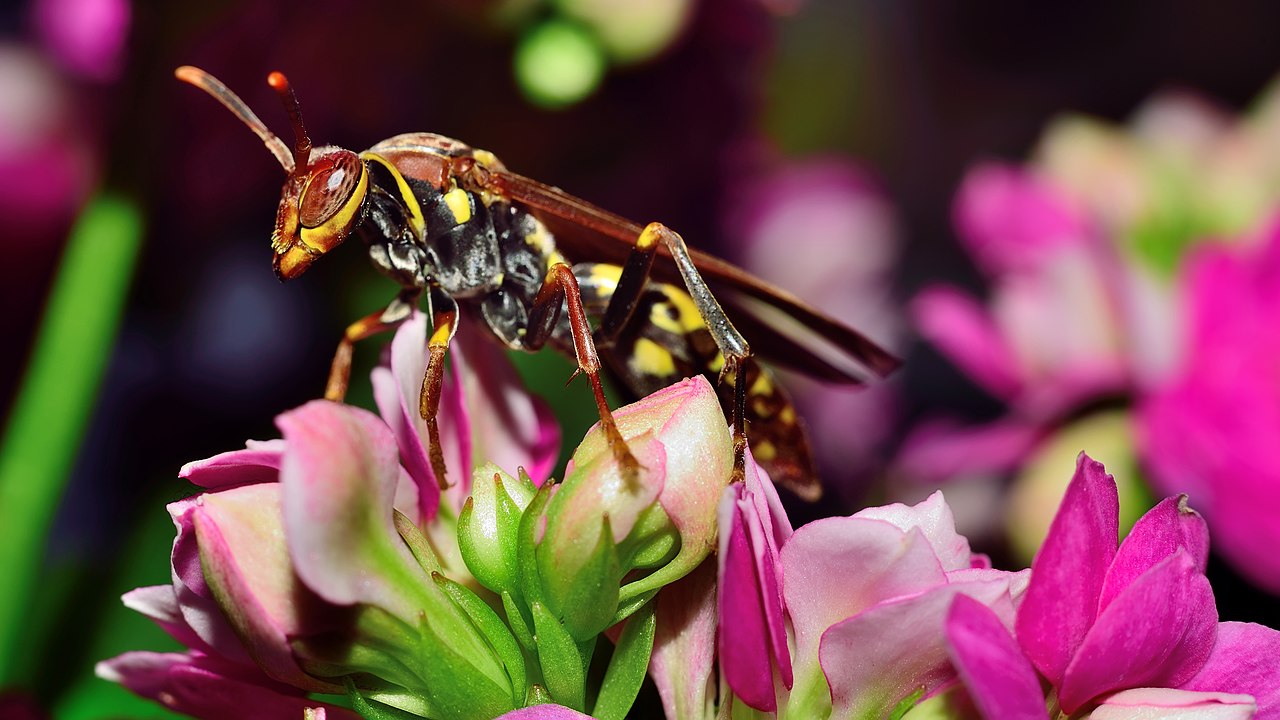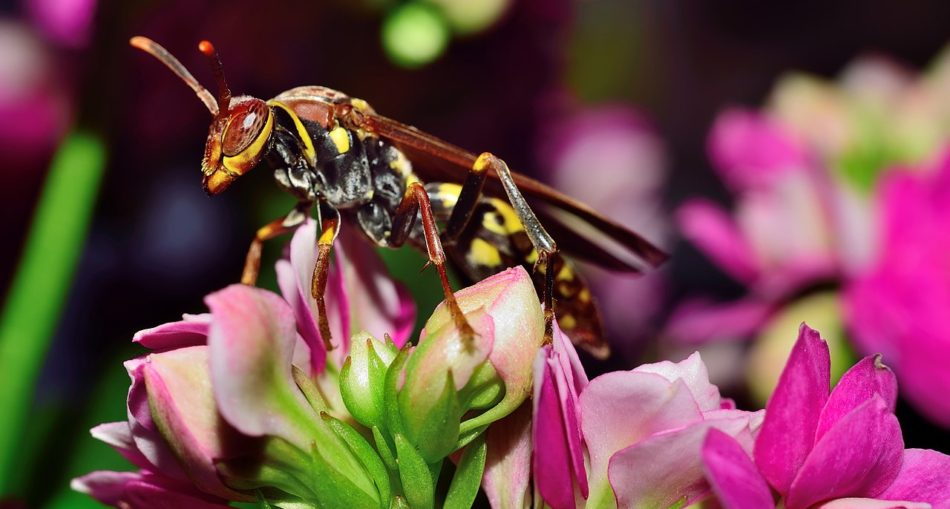The Variegated Paper Wasp is a social, winged insect native to the subtropics, easily distinguished by the yellow bands streaking across most of its body. The scientific name of this species of paper wasp is Polistes versicolor but it is commonly known as the Variegated Paper Wasp. The Variegated Paper Wasp is the most distributed species of paper wasps in Central America and South America. The species is commonly found in countries like Argentina, Brazil, Colombia, Costa Rica, Ecuador, French Guyana, Grenada, Guyana, Panama, Paraguay, Peru, Suriname, Trinidad, and Venezuela.

Variegated Paper Wasp – Photo By Paulomelo.adv – Own work, CC BY-SA 4.0, https://commons.wikimedia.org/w/index.php?curid=49343691
Description Of The Variegated Paper Wasp
Paper wasps are typically about sixteen (16) mm long. The male and female of the Variegated Paper Wasp species are fairly similar, sharing a pair of transparent wings, a black body striped with yellow bands, particularly on their abdomen and thorax. The most notable difference is the size, females are larger with the queen being the largest and new females being the smallest.
Interesting Tip
- The body size of the female Variegated Paper Wasps depends on the conditions of their environment.
Habitat Of The Variegated Paper Wasp
The habitat of the Variegated Paper Wasp includes natural environments under layers of rocks, and plant material such as branches, leaves, and roots. Occasionally, they inhabit the abandoned nests of similar, social wasp species. They are also found high in human buildings, which they seem to prefer since these are stronger than plant material and thus more suited for nest building.
Reproduction Of The Variegated Paper Wasp
In a colony of Variegated Paper Wasps, there is typically one queen or multiple females who cooperated to build the nest. The foundress usually inspects the structure where their nest is to be built. Nests are papery, hence the name “paper wasps” and are of a grey colour. Variegated Paper Wasps have nests typically made of approximately two hundred and forty-four cells (244) and one hundred seventy-one (171) adult wasps. Construction begins with the peduncle once the location is selected. As the colony grows and the number of cells increases, the peduncle is strengthened with more plant fibres.
Soon after the creation of a nest, a reproductive dominance hierarchy is established in the colony often by physical aggression. The dominant female spends more time in the nest, laying eggs and also receives a larger portion of food. The subordinate foundresses manage the work of the nest, such as cell construction, nest defence and foraging for prey, nectar, and water. Since the egg-layers receive more food, they are larger than the subordinates. Therefore dominance is largely dependent on the food exchange.
Females in foundress associations have well-developed ovaries while that of those who join are undeveloped. Subordinate females remain fertile however in some cases, the females reabsorb their oocytes into the nest postemergence phase. In founder associations, eight-five (85) percent of the females are inseminated as compared to aggregations of which seventy-five (75) percent of the females are inseminated. The egg stage of the wasp ranges from five to sixteen (5-16) days, the larval stage from twelve to forty-two (12-42) days while the pupal stage can be anywhere from sixteen to twenty-six (16-26) days. The queen uses physical dominance to make sure other females are discouraged to reproduce. In foundress associations, ovarian diapause is not present which allows the foundresses to start new nests and immediately lay eggs after leaving a colony.
9 Interesting Facts About The Variegated Paper Wasp
- The colony cycle length of the Variegated Paper Wasp differs; short-cycle colonies are up to three to six months (3-6)and long-cycle colonies can range from six to ten (6-10) months.
- Sometimes the Variegated Paper Wasps lays their eggs in abandoned nests instead of constructing their own.
- A colony can contain multiple females who join together to build a new nest, or per tradition, queens can create their own nests.
- If a subordinate were to receive more food, she can get bigger and can eventually challenge the founder. They display aggression in the form of nipping, stinging and biting.
- The female will touch the side of the first cell, built in a circular shape. Next hexagonal outlines are created to cater to the peripheral cells, built around the first and connected to neighbouring cells.
- A subordinate worker has an average lifespan of about ten to seventeen (10-17) days.
- Variegated Paper Wasps build their nests with peduncle which is vegetable material, chewed with salivat and attached to the substrate later in thread-like forms.
- Worker activity is made up of periods of inactivity and intense activity where all individuals are active, feeding, foraging or interacting.
- This is believed to be a decentralized system where colony activity is regulated by the workers themselves.
About Variegated Paper Wasp
The Variegated Paper Wasp is a relatively small insect native to Guyana. These wasps are sociable and you will often find multiple females cooperating to build a new colony. They like to build their nests high up in buildings so watch your head!
Article Reference
- https://en.wikipedia.org/wiki/Polistes_versicolor
- https://www.pbase.com/tmurray74/guyana_wasps_and_bees
- http://www.vespidae.be/Polistinae/Polistes_versicolor.htm







